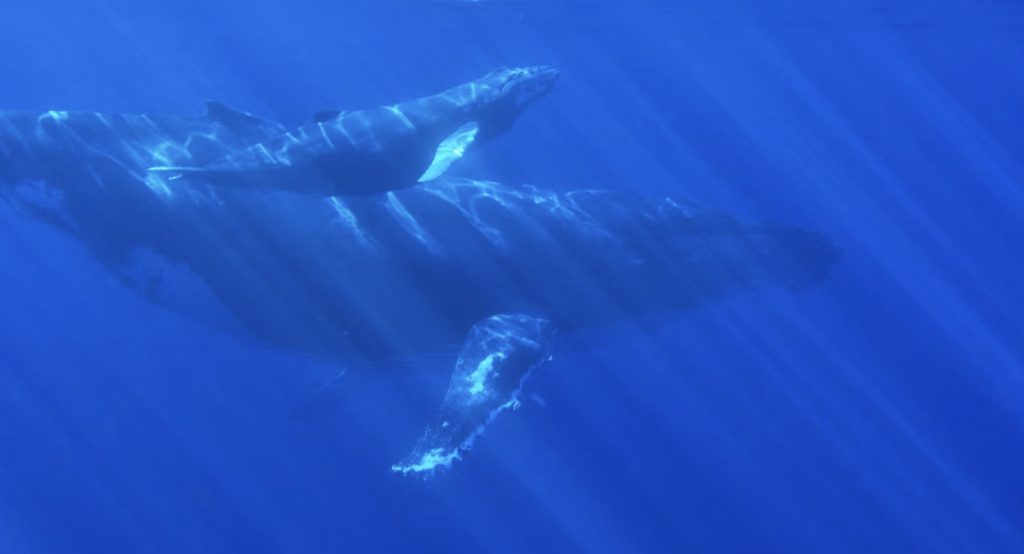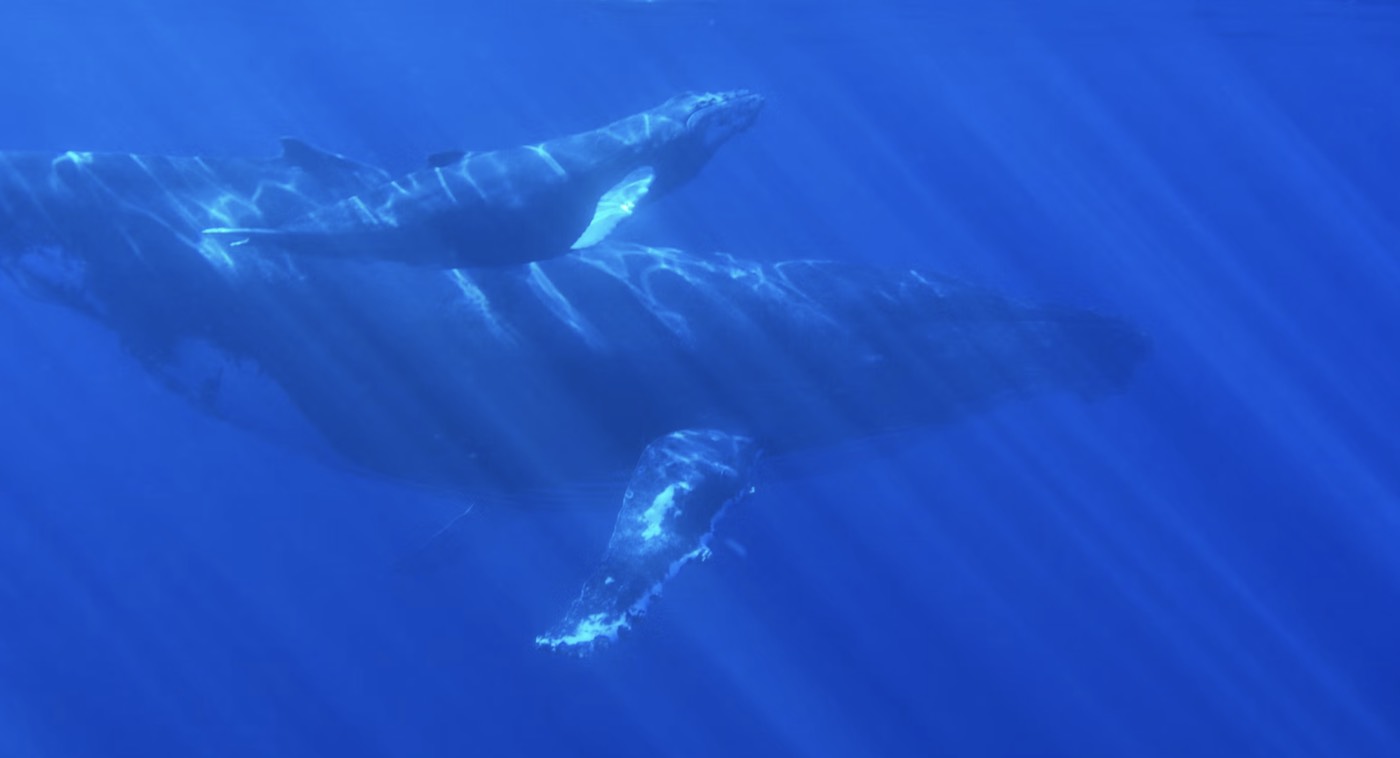
Sounds made by humpback whales—including a previously unknown call—have given researchers a glimpse of their lives in the high seas.
Scientists recorded the sounds hundreds of miles west of South Africa at the Vema Seamount in the Atlantic Ocean.
The “whup” and “grumble” calls captured suggest this location could be an important stop on the whales’ migration to polar feeding grounds.
Whale sounds are categorized into continuous “song” and shorter “non-song” calls. The study recorded 600 non-song calls over 11 days.
These included an “impulsive sound”—dubbed “gunshot” by the researchers— that has never been recorded before. Until now, impulsive gunshot sounds had only been associated with other baleen whale species, notably right whales, and bowhead whales which do not inhabit the region.
The most common whale call detected was the “whup”. The “whup” is known to be used between mother-calf pairs as a contact call that helps them locate each other while moving southward after the breeding season.
POPULAR: A Pod of Whales Adopted a Young Stray Narwhal – and They May Have Little ‘Narwhales’
Humpbacks also “whup” while feeding.
The research team from the universities of Stellenbosch (South Africa) and Exeter (UK), and Greenpeace Research Laboratories, used moored hydrophones to record the whales.
They said their study, published in the journal JASA Express Letters, highlights the importance of current negotiations over a UN treaty to govern the high seas.
“50 years ago, governments came together to turn around the fate of humpback whales,” said Dr. Kirsten Thompson, of the University of Exeter.
“Now they have a chance to secure the progress already made and protect the high-seas habitats that whales rely on.
RELATED: Zero Humpbacks Off Seattle Coast 25 Years Ago – Now 500 Return With Record Number of Calves
They are advocating for a coherent and connected network of Marine Protected Areas across our oceans to ensure seamounts like Vema are protected. A seamount is an underwater mountain with steep sides rising from the seafloor, formed by volcanic activity.
The area around the Vema Seamount was heavily overfished after its discovery in 1959, but it is now closed for fishing and is recognized as a vulnerable marine ecosystem due to its unique biodiversity.
WATCH: Friendly Humpback Whale Gives Woman the Experience of a Lifetime
Will McCallum, Head of Oceans at Greenpeace, said a UN treaty is currently under negotiation, called the Marine Biodiversity of Areas Beyond National Jurisdiction, which would provide a framework for creating a network of Marine Protected Areas to cover 30% of the high seas.
“Once upon a time, the high seas were thought of as barren,” he said. “Ground-breaking research like this shows they are teeming with life.”
CALL Your Friends With an Impulsive Sound to Share This on Social Media…




















